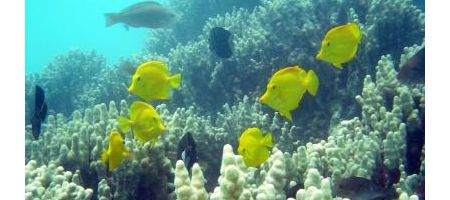As many as two thirds of the species living in our oceans may still be unknown to science, say researchers, despite the fact that their calculations indicate that there are many fewer species than previously thought.

The University of Auckland researchers reckon there are actually fewer than a million marine species, of which around 226,000 have been described by science and around 72,000 more in collections awaiting description.
But the rate of discovery is increasing, with an unprecedented 20,000 new marine species described in the last decade alone – and leading the researchers to suggest that most marine species will be discovered this century.
“Knowing how many species there are in our oceans, and describing them, is vital for science and conservation for several reasons,” says associate professor Dr Mark Costello.
“Species are the most practical measure for distinguishing habitats and tracking progress in exploring the Earth’s biodiversity. They are as fundamental to biology as elements are to chemistry and particles to physics. So failure to consider all species in an ecosystem is analogous to an accountant ignoring items of inventory in a company’s stock.”
The study involved 120 top marine taxonomists, and represents the sum of their opinions on how many species may exist. Many of the species yet to be discovered will come from amongst the smaller crustaceans – molluscs, algae, worms, sponges and the like.
“Better understanding of what species exist enables more accurate estimates of extinction rates due to habitat loss. In addition, having a standardised master list of species names is essential for quality assurance in science and the management of natural resources,” says Costello.
“Inventories like these also reveal where taxonomic effort will discover most new species, and this is the first step in biology, akin to an explorer discovering new land.”






